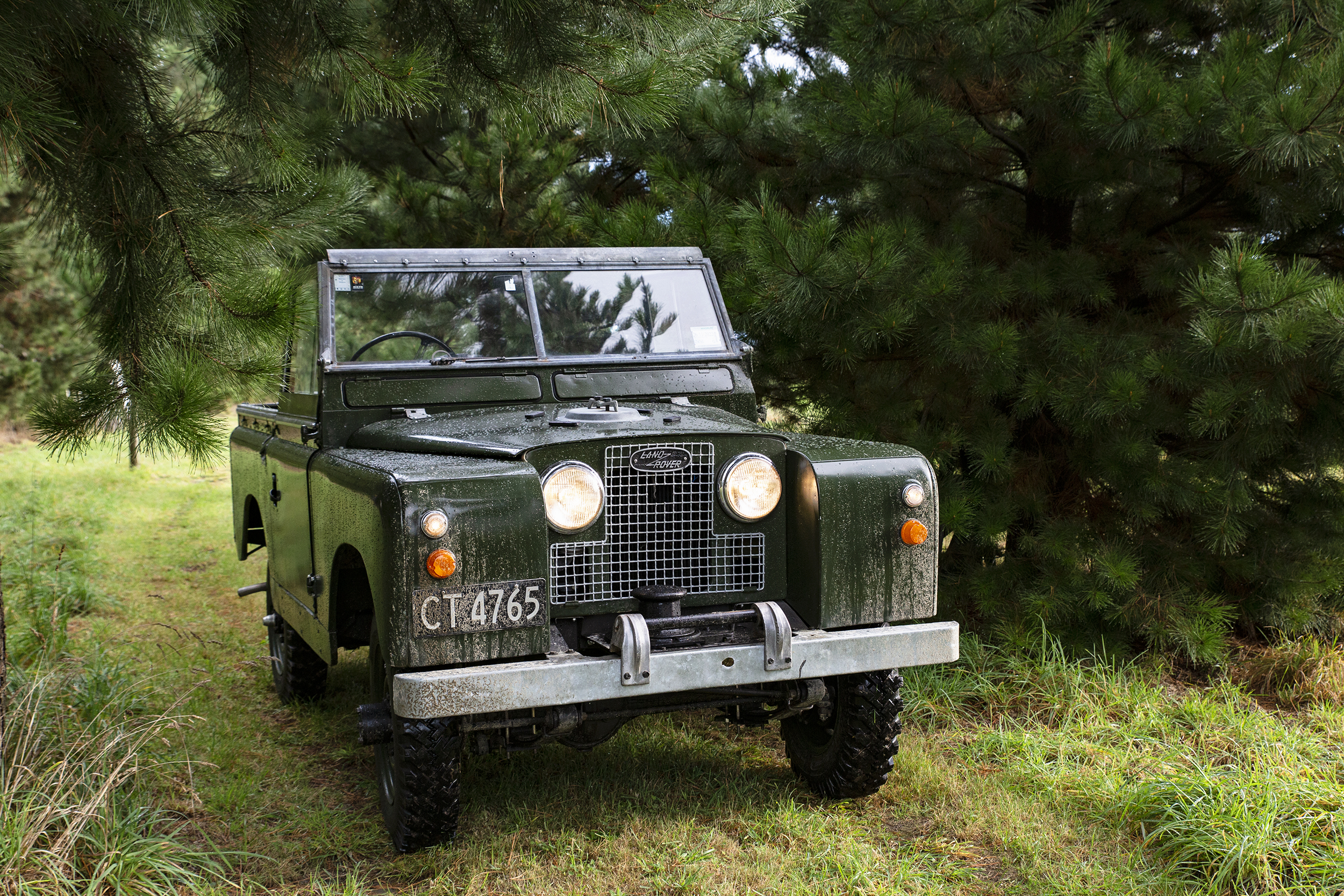New Zealand's love affair with the Land Rover

Few vehicles are more cherished or iconic than the series Land Rover.
With its roots entwined in modern agriculture and World War II history, the Land Rover symbolises utilitarian reliability and no-frills function over form.
Most New Zealanders have owned a Land Rover or had childhood memories of riding in one with relatives across a farm paddock.
"So many people will stop you and say, oh, I learned to drive one of those," Series II A owner Jeremy Evans says.
"Particularly out in the country where everyone's either got one or had one or knew someone who had one."
The Land Rover was born in post-World War II Britain in 1947 by the Rover Company, in an ex-aircraft engine factory Rover moved into after their original Coventry factory had fallen victim to bombing during the war.

The brainchild of Rover chief designer Maurice Wilks, the Land Rover was inspired by the robust Willys Jeep to be an agricultural workhorse for Britain.
Steel was still severely rationed, so the body was made from aluminium originally hallmarked for aircraft and painted in shades of the surplus green paint that had initially been destined for aircraft cockpits.
The original design had the steering wheel in the centre to mirror a tractor but was repositioned off to the side for practicality when it came to production.
What began as a short-term project for the Rover company to increase cash flow soon became a top-selling vehicle.
Between 1969-1970 sales of Land Rover were recorded at 60,000 per year.
As a testament to the vehicle's resilience, it is estimated that more than 70 per cent of the two million earlier models produced are still being driven.

"People are pulling them out of barns.
"There are just so many of them everywhere, which is great.
"Few of them die completely," Jeremy says.
Jeremy's 1968 Series II A had been returned from the rusty dead by its previous owner before Jeremy purchased it last year.
"I've had more modern ones, but this is my oldest one.
“I bought it because it was so mint.
"It had had a total nut and bolt restoration with parts from England and Australia.
"It had gone from a rusty pig to back to almost new condition.
“Right down to the heater."
The engine and gearbox, which is a four-speed with overdrive, were rebuilt, and the body restored, with rust removal and new paint.
What sets this vehicle apart, though, is the attention to detail.
"It's got a leather steering wheel and a mini radiator that works like a heater core that comes from the engine.
"A lot of Land Rovers either never had them, or they rusted out because of the water running through it.
Jeremy says the heater is a welcome addition on a chilly day, although it does have its drawbacks.
"It does tend to steam the vehicle up a lot, though.
"So you are out there with your rag cleaning the windscreens and the side windows all the time in winter."
Andy Bain, farmer and owner of Bains Classic Motor House, has had plenty of Land Rovers over the years.
"Everyone remembers one, or they've had one in their farm shed, or their gran had one.
"Everyone has a connection to them somehow," Andy says.
Andy has a 1961 Series II out on loan for the day from Warrick Neal, who restored the vehicle.
The Land Rover had been in the Neal family since it was six months old.
Warricks’ grandfather, Max, purchased the vehicle for £1300 and used it for his building company before it became the family car for Warricks’ mother in 1972.
The Land Rover was retired to the farm shed in the 1980s before Warrick stripped the vehicle in 2018 and reassembled it with parts sourced from across the globe.
Both vehicles are so meticulously restored they provide a window into what a new Land Rover would have been like when it rolled off the factory floor in the 1960s.
The New Generation
The Land Rover Defender, a follow-on from the previous 110 and 90 models, was produced between 1990 and 2016. It ceased production mainly due to safety regulations.
In 2020, a completely redesigned luxury Defender (L663) was launched to rave reviews.
For the farmer and owner of Amberley House, Angie Mason, the new Defender was the perfect mix of comfort and robust versatility.
Angie purchased the vehicle earlier this year.
"We are hard on our vehicles because they do go on the farm.
"But we wanted something a bit more comfortable because we were also going to be driving into town a lot.
"We looked at the Range Rover, the Discovery, and the Defender," Angie says.
"But the Defender was just so totally us."
Angie says the Defender was able to tow the horse float and drive around the farm but was equally at home in the city.
"It doesn't look out of place anywhere.
"It's just really pragmatic, and I think the decision for me is that it is luxurious without being ostentatious."
Angie says the new Defenders' styling gives enough of a nod to its predecessors to retain the Land Rover's original old-school charm.
"It's retro yet modern.
"They've managed to keep the essence of the iconic Land Rover in this really modern, almost luxurious vehicle.
"And that's quite a hard ask, really," Angie said.
by Claire Inkson

